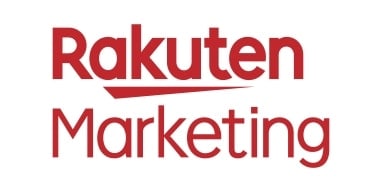As the modern consumer journey becomes increasingly complex, the different opportunities available to engage with consumers are growing exponentially. Shoppers are interacting with more touchpoints across more marketing channels and devices than ever before, but which tactics should be the priority for marketers over the coming year?
With so much choice comes the increased pressure on marketers to justify their budgets and prove ROI effectively. In light of this, here are five trends performance marketers must be aware of to succeed in 2017.
1. The mass adoption of programmatic TV advertising
Programmatic will no longer just dominate digital display advertising. 2017 will see the mass adoption of programmatic TV advertising.
Rakhee Jogia, regional director of Rakuten Display Europe, says:
“2016 was the year programmatic went mainstream: it now accounts for 70% of all digital display ad spend according to eMarketer. However, broadcast media still has a way to go before it is all purchased programmatically. This will change in 2017 as the success of Sky’s AdSmart has shown advertisers what they can achieve with targeted TV advertising. Widespread adoption of programmatic TV will follow technology enabling personalisation across broadcast media becoming smarter and easier for marketers to use.”
2. Cross-device will become the norm
It’s long been established that the number of interactions shoppers have with a brand across different channels and devices is increasing. In just three years, the average number of interactions with a brand before conversion increased by seven, from 2.5 to 9.5.
Today’s shoppers move around quickly between devices, channels and websites. Despite this, advertisers still insist on creating mobile and desktop specific campaigns, and measure performance without truly considering cross-device tracking. As such, cross-device measurement will graduate from a ‘nice to have’ to an essential component of campaign performance measurement and optimisation.
3. Sophisticated storytelling
Advertisers will move away from static formats like banner ads and more towards media that allows them to share creative content experiences with their audiences. The emergence of storytelling platforms like Snapchat and Instagram, as well as the explosion of video and shoppable content, are raising the stakes in audience engagement and provide the opportunity for smarter storytelling.
Brands like Ted Baker have made million dollar investments in creating films that let people purchase the featured products, suggesting a move away from traditional ad formats and instead, towards content that is interactive and entertaining. This type of content is arguably more useful for the viewer as a story, not just an ad.
4. Businesses will move closer to actionable attribution
Marketing attribution will continue to be a goal of many businesses as marketers continue to look to attribute sales across channels and devices.
Although the complexity of the modern consumer journey can complicate attributing value across the entire path to purchase, more businesses will attempt to incorporate attributed reporting into the day-to-day optimisation of their marketing.
Brands that have a view of the entire customer journey are given a fuller view of how consumers discover, engage and purchase from them.
Exposing every step in the consumer journey, rather than just where a final sale comes from, showcases the importance of publishers and content that acts as influencers at the beginning of the user journey. Not only this but it also provides an understanding of how channels often only associated with delivering at the last click – such as voucher affiliates – add value to the entire journey to purchase.
Having this understanding front of mind, and knowing how to interpret attributed data, will be key to strategy in 2017. It will also allow brands to continually tweak the dials to keep improving results from their marketing spend.
5. Social taking a larger piece of the ad investment pie
Spend in social is skyrocketing and this will continue into 2017 – and beyond.
Brands are reallocating budget to social. eMarketer predicts that in the UK, social network ad spending will increase from over £1.5bn in 2016 to over £1.9bn in 2017 (16.1% of total digital ad spending in 2016 to 18.1% in 2017).
Publishers are equally working on how they use social in order to extend their influence. For example, Pinterest has allowed affiliate links again after seeing their value, and bloggers are using social as a channel in their marketing mix.
In order to maximise the value of social, however, this year advertisers will look to invest in better creative across these channels and data that lets them see social in the context of cross-device advertising.
These trends all point towards two main themes. Firstly, marketers must take advantage of the opportunities offered by the different touchpoints, channels and devices that make up the modern consumer journey. And secondly, dedicating time and resource to the accurate measurement of these multi-channel campaigns will provide the data needed to make better optimisation decisions.
Embracing these two themes is essential for performance marketing success in 2017.


